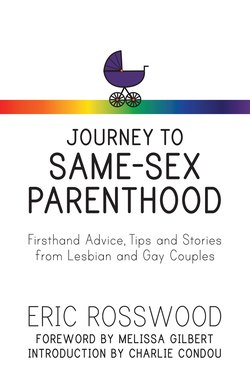Читать книгу Journey to Same-Sex Parenthood - Eric Rosswood - Страница 11
На сайте Литреса книга снята с продажи.
ОглавлениеPART 1
OPEN ADOPTION
In the past, adoption used to be secretive. No contact was made between the adopting and biological parents and no information was exchanged between them, either. Adopted children grew up without the knowledge of who their birthparents were and, because of this, many grew up believing they were thrown away or given up. A massive transformation occurred when adoptees started demanding the right to know their biological backgrounds and birthmothers started calling for change. Now, open adoption has become the norm for infant adoptions in the United States.
Open adoption was designed as a way to benefit everyone involved, giving all parties (the birthparents, the adoptive family and the child) more information about each other. With open adoption, the birthparents and the adoptive parents meet each other prior to the adoption taking place. They share information with each other and can remain in contact over the years.
This may sound like an awkward scenario at first: Why would you want to remain in contact with the birthparents? Wouldn’t that create an uncomfortable situation for everyone involved? It may seem scary, but there are actually numerous benefits to open adoption. Some examples include birthparents having the peace of mind of knowing their child is being raised in a safe and stable home, the adoptive family getting more information about their child’s family medical history and the child having the opportunity to know more about his or her biological heritage and background.
The journey begins when the birthmother (and birthfather, if he is still in the picture) decides to place their child for adoption. After contacting an agency and completing an intake session with a counselor, the birth-parents choose the adoptive family they want to place their child with.
How do adoptive parents get selected by birthparents? After deciding on an agency, adoptive families complete thorough background checks consisting of mounds of paperwork, medical physicals, fingerprinting, credit checks, home studies, reference checks and more. Once approved by the agency, adoptive families create a “Dear Birthmother” letter. The purpose of this letter is to give birthparents more information about you and to convey how you will raise their child if you are chosen. A simple online search will show you numerous examples of various Dear Birthmother letters. Once completed, the agency sends the letters to various birthparents and the adoptive parents wait to be contacted. It’s a bit like online dating. You fill out your profile and wait for the perfect match to contact you.
There’s no telling how long your wait might last. You may get contacted right away or you may be waiting for years. While there are things you can do to increase your chances of getting chosen (check with your agency or lawyer since laws are different in each state), the timeline is really left up to fate. The lack of control and unknown future can be very stressful and can even take a toll on your relationship with your partner. Open communication and support for each other is key here.
After the birthfamily chooses an adoptive family and everyone agrees to move forward, they will meet in person and will most likely create what is referred to as a birth plan. This is where you decide things like who will be present during the birth, who holds the baby first and who cuts the umbilical cord. The birth plan is not a contract, but when the birthmother finally goes into labor, it will be used as a guide to help the day run as smoothly as possible.
With open adoption, the birthparents release all of their parental rights and responsibilities, but different states have different laws regulating timelines for when this can happen. They also have different waiting periods for when you can return home if you have an out-of-state adoption. Your agency or attorney can help ensure all criteria are met and the necessary paperwork is filed on time.
Becoming a parent can be a hectic and nerve-racking experience. Some challenges that are common to the open adoption path include unpredictable waiting periods, emotional stress, adoption scams and the possibility that a match will fall through. A qualified and reputable adoption agency can help alleviate some of the stress by weeding out potential scams and providing emotional support to help you get through the challenges that pop up along the way. This support could come in the form of a counselor or support group filled with other families in the same situation as you, sharing their experiences with each other.
This portion of the book will give you insight into what it’s like for same-sex couples going through the open adoption journey, while also touching on the many emotional complexities that people have come face-to-face with along the way.
What types of challenges do same-sex couples encounter when trying to obtain a birth certificate for their newborn? What is it like to actually go through a home study? What kinds of adoption scams are out there and what does it feel like to go through one? You’ll find the answers to these questions, and many more, after reading this section.
